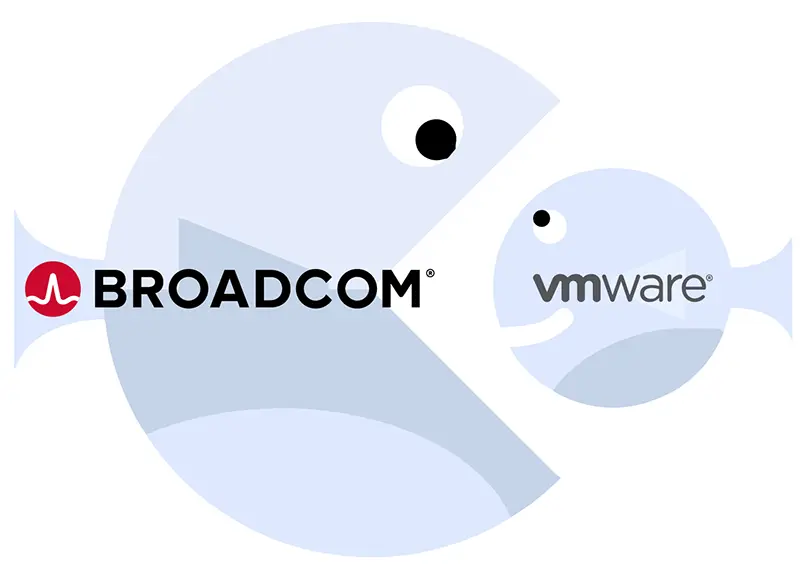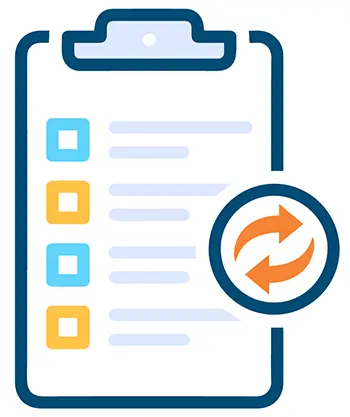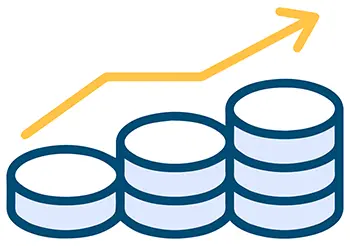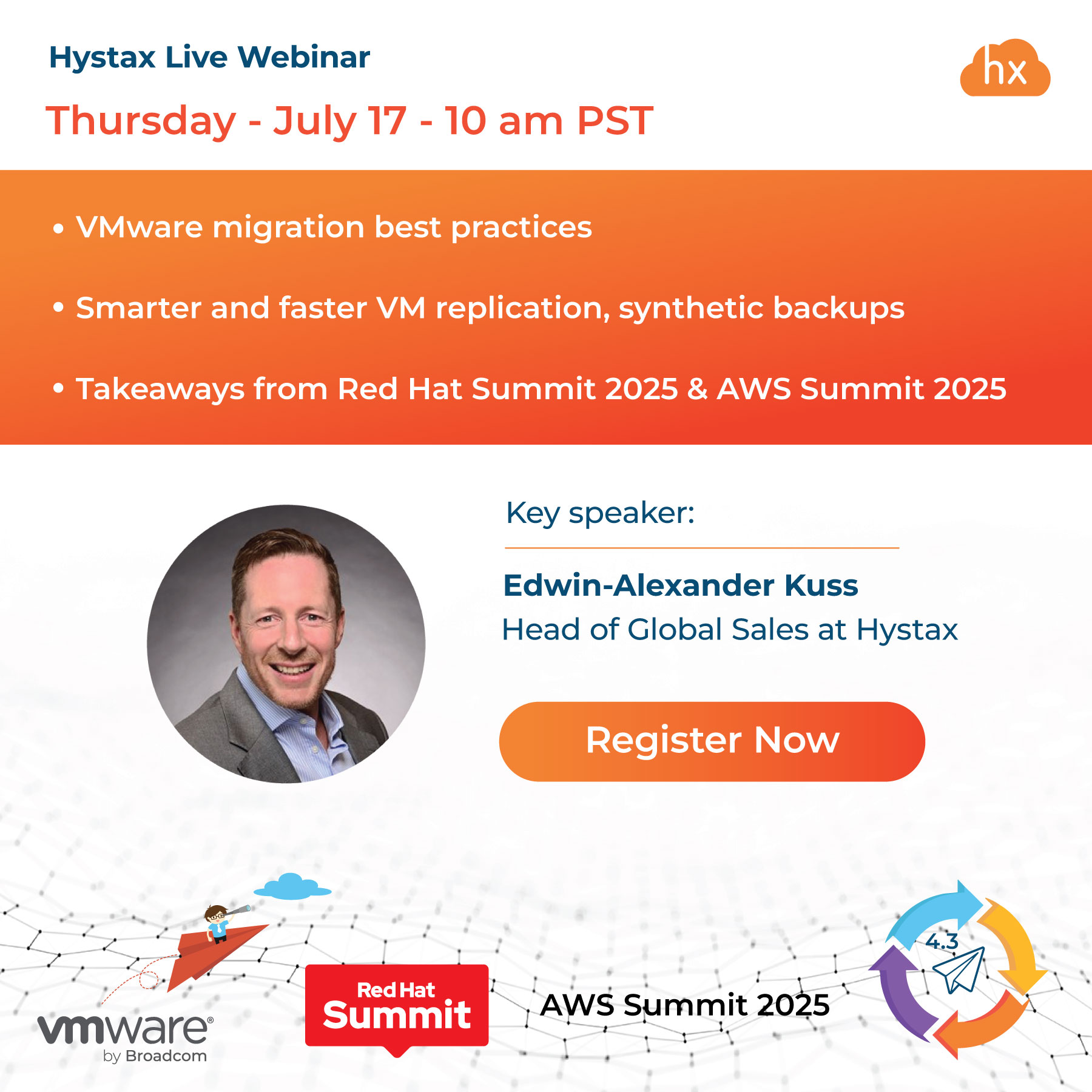
A backstory: Broadcom’s VMware acquisition
Since its foundation in 1998, VMware has been at the forefront of developing software for virtualizing x86 architecture, which can, without a doubt, be considered the forerunner of cloud services as we know them today. Three years fast-forward, VMware released its pinnacle products that allowed users to run multiple systems on a single physical machine and enabled server hardware virtualization. These technologies’ impact on the market cannot be overstated, as numerous data centers have changed their operation since then. This work by VMware in enabling the delivery of IT services in a new, quasi-‘cloud-based’ model can be considered the foundation that marked the advent of cloud computing as we know it today. It is no exaggeration to say that 2001 can be regarded as the ‘year zero’ for the start of the cloud computing era.
Over the years, VMware has steadily expanded its product offerings, developed some critical technologies, and made strategic investments to increase its share of the ever-expanding cloud computing market. At some point, things weren’t going so well for the company, and this is when VMware went through several ownership changes, including being owned by EMC and then Dell.
Dell, a major VMware stakeholder, agreed to sell VMware to Broadcom when the latter officially announced its plans for the takeover in May 2022. It took almost 18 months and $61 billion to strike the deal. The acquisition process was followed by scrutiny from investigations by the EU, US, UK, and China. Besides, controversy arose as many loyal VMware customers feared that they would have to look elsewhere because of Broadcom’s track record: in the past, it had acquired Symantec and CA Technologies, which resulted in the discontinuation of certain products and services and significant disruption for users.

VMware licensing and product line changes
VMware’s first step under new management was to stop offering perpetual licenses and move to a subscription model. Then, they revamped their product line, dramatically decreasing the number of available offerings: more than half of the features were discontinued, while another part was packed into two bundles, VMware Cloud Foundation and VMware vSphere Foundation, plus an add-on. Needless to say, none of the remaining features can be purchased as standalone offers.
Of course, the existing perpetual licenses for VMware products did not expire, meaning they ‘technically’ could be used indefinitely. However, to receive support, updates, and new software versions, customers always needed to purchase a Support and Subscription (SnS) contract on a subscription basis. This means that, without an active SnS contract, old customers who own perpetual licenses would not be entitled to new versions, direct support from VMware, or critical security updates. As a result, even though the perpetual license remained valid, the unavailability of support and subscription contracts for these licenses renders them hardly usable without ongoing access to updates, support, and security patches. This policy made some old clients suspect they were being pushed into a new model.
As for this new model, let’s have a quick rundown of VMware’s brand-new bundles. You can find out more about their offerings on VMware’s blog:
- VMware Cloud Foundation: This is VMware’s most comprehensive solution, offering a full-stack infrastructure platform. It integrates vSphere, vSAN, and NSX technologies, including the complete Aria management and orchestration suite.
- VMware vSphere Foundation: This solution optimizes data center operations in traditional vSphere environments; it includes Tanzu Kubernetes Grid and Aria Operations tools.
- VMware Add-on Services: This service is available for both VMware vSphere Foundation and VMware Cloud Foundation and covers extra storage, security, disaster recovery, Generative AI, and other needs.
VMware themselves claimed that this ‘portfolio simplification will allow customers to extract more value from their VMware investment,’ so let’s see what happened to VMware pricing from the customers’ standpoint.

VMware pricing: users’ perspective
Over the years, VMware has been a versatile solution catering to enterprises, small businesses, and individuals. And, while this transition to more consolidated packages didn’t seem to affect big organizations, representatives of small businesses using lightweight VMware deployments flooded the Internet with their renewal proposals.
For example, a small VMware partner commented on Reddit that they have seen their renewal costs spike from $10,000 to $50,000, marking a 5x increase. Another user complained that their essential service subscription would cost them 25 times more than their previous one. Another Redditor that represented a British university was expecting to face up to a 1250% uplift, from £40,000 to £500,000 annually, once their support contract expires in 12 months. We should note that all the above examples represent the users’ personal experiences. However, the trend suggests a significant direction: Broadcom is raising prices to make their substantial investments pay off and maximize short-term revenue.
Other repercussions
But the changes didn’t end here. Broadcom has overhauled its partnership structure with VMware resellers and service providers by terminating existing agreements and moving to an invite-only model named the Broadcom Advantage Partner Program. This behavior would supposedly facilitate operations and increase profitability ‘through simplified bundled offerings and more opportunities for service revenues.’ Similarly to the changes in the pricing model, these adjustments have also raised concerns among smaller partners due to the stringent revenue requirements for joining the new program.
On the other hand, Broadcom is trying to compensate for all the above with its collaboration with Google Cloud. This partnership sees increased integration of VMware products with the GCP, aiming to improve efficiency and the use of advanced analytics on Google’s platform. Broadcom is also introducing VMware Cloud Foundation license portability to Google Cloud, providing customers with more flexibility and cost savings in deploying their VMware software on-premises and in cloud environments. It remains to be seen whether this move will help Broadcom overcome confusion from significant changes in pricing structures.
Insights and conclusions
Before wrapping it up, let’s return to Broadcom Software Investor Day in September 2021. Broadcom presented its go-to-market vision and financial model of these recently acquired companies during that event before the VMware acquisition but after overtaking Symantec and CA Technologies.
Broadcom’s Investor Day deck shows that Symantec and CA Technologies had lower organic revenue growth, gross margin, and operating margin before their involvement. Post-acquisition, these metrics were improved at the expense of reduced R&D and sales & marketing costs, which, in turn, stems from Broadcom’s go-to-market vision. It involves a focused approach on the largest key customers who are less likely to switch providers due to the complex and regulated nature of their respective industries and large, branched IT departments. With the focus on such companies, there is no necessity for high sales and marketing expenses, while R&D can be tailored to meet the specific needs of these major clients.
All this pushes these customers to consider migration options and, consequently, look for a solid cloud migration solution from VMware. Solutions like Hystax Acura can provide a comprehensive and seamless path for moving from VMware to any cloud platform. It ensures a smooth transition to the cloud while maintaining data integrity, security, and operational continuity. By leveraging Hystax Acura, businesses can confidently navigate the complexities of migrating VMware workloads to the cloud, enabling them to optimize costs, enhance flexibility, and use the full potential of cloud infrastructure.
If you intend to securely and cost-effectively migrate from VMware to any other cloud platform, it’s worth exploring Hystax Acura. For more details, see the Hystax Acura cloud migration demo. Feel free to contact us to learn more about our special VMware migration package.



